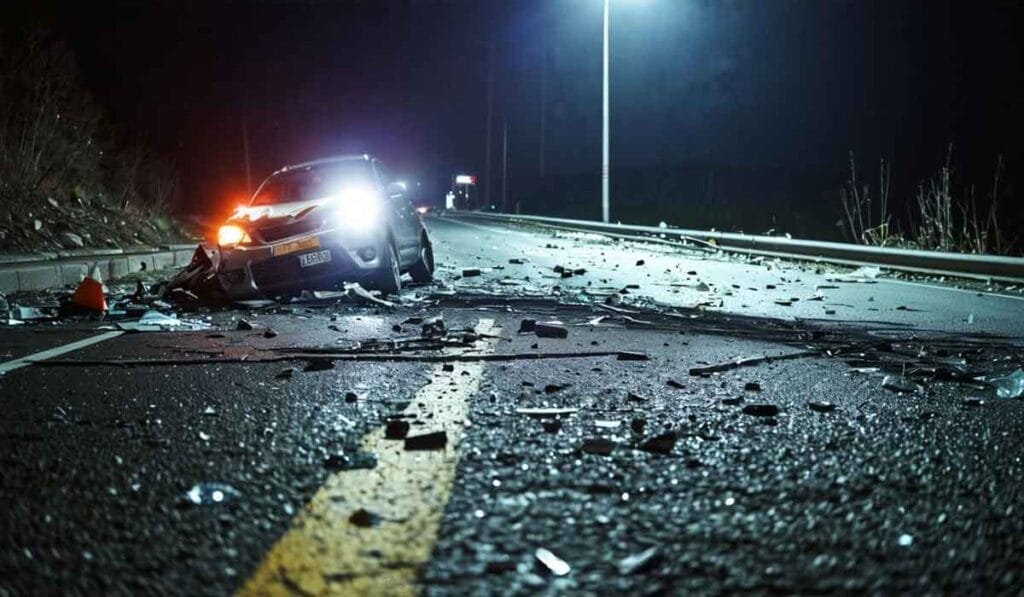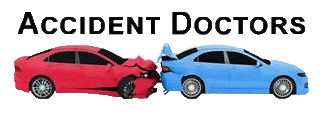The Ultimate Guide to Recognizing PTSD Symptoms From Car Accidents
You might feel different after a car accident.
It’s normal. One fact is that these events can lead to post-traumatic stress disorder, or PTSD, for some.
Our guide shows you how to recognize if what you’re feeling could be PTSD and what steps to take next.
Please note: We are accident doctors who charge you $0 out of pocket for the best after car accident medical care.
We can help you overcome PTSD from an accident too.
You should come in and get treated by us first, before you try and find an auto accident attorney in Phoenix or Mesa.
Key Takeaways
Primary Symptoms
Core Manifestations
- Intrusive thoughts and memories.
- Flashbacks to the accident.
- Hypervigilance and startling easily.
- Sleep disturbances and nightmares.
- Emotional numbness.
- Avoidance behaviors.
Risk Factors
Contributing Elements
- Severity of the accident.
- Personal injury involvement.
- Previous traumatic experiences.
- Presence of fatalities.
- Pre-existing mental health conditions.
Treatment Options
Professional Interventions
- Cognitive Behavioral Therapy (CBT).
- Eye Movement Desensitization and Reprocessing (EMDR).
- Supportive psychotherapy.
- Medication when necessary.
- Group therapy sessions.
Recovery Strategies
Self-Management Tools
- Mindfulness and relaxation techniques.
- Physical activity and exercise.
- Building support networks.
- Regular medical monitoring.
- Stress management practices.
Warning Signs
Red Flags
- Worsening of symptoms over time.
- Increased frequency of flashbacks.
- Developing suicidal thoughts.
- Inability to perform daily tasks.
- Severe social withdrawal.
Understanding PTSD Following Car Accidents
After a car crash, some people develop PTSD, which stands for Post-Traumatic Stress Disorder. It’s more common than you might think and can really affect your life.
Definition of PTSD

Post-Traumatic Stress Disorder (PTSD) is a psychiatric disorder that can occur in people after they’ve gone through a traumatic event.
This might be something like a car accident, personal injury, or any situation where someone’s safety was at risk.
PTSD can make you feel stuck with your memories of the trauma. You might have trouble sleeping, feel on edge all the time, or avoid places and things that remind you of what happened.
After experiencing something traumatic, it’s normal to feel scared, sad, or anxious. But if these feelings don’t fade and start affecting your daily life, it could be PTSD.
Symptoms include flashbacks to the trauma, nightmares about it, feeling numb or detached from others — even those close to you — and being easily startled or frightened.
Understanding how common PTSD is following car accidents can shed light on why recognizing its symptoms early is crucial for recovery.
How Common is PTSD After Car Accidents?
Many people experience PTSD after car accidents. Facts show that car crashes lead to a significant number of traumatic stress cases every year.
Feelings of fear, anxiety, and reliving the accident are common symptoms for survivors.
Medical professionals diagnose thousands with PTSD following such events annually.
Experts say around one in three people who survive serious auto accidents develop PTSD. This condition doesn’t just affect the mind but also how individuals handle daily life and relationships.
Tools like Cognitive Behavioral Therapy (CBT) and Eye Movement Desensitization and Reprocessing (EMDR) have become key in treatment plans for those affected.
PTSD from auto accidents is a gripping reality for many, touching lives beyond the immediate trauma.
Recognizing signs early can make a big difference. Symptoms like sleep disturbances, driving anxiety, and emotional distress signal it’s time to seek help.
Specialists in psychological health stress the importance of addressing these symptoms promptly to support recovery and return to normalcy.
Recognizing the Symptoms of PTSD

Understanding the signs of PTSD after a car crash is key. Signs like unwanted thoughts, seeing the accident happen again in your mind, being overly alert, staying away from places or things that remind you of the incident, feeling emotionally empty, and having trouble sleeping can signal PTSD.
Intrusive Thoughts
Intrusive thoughts after a car accident are sudden, unwanted thoughts or images about the event that pop into your mind without warning.
These can be distressing and hard to shake off.
They might include vivid memories of the crash, worries about safety while in a vehicle, or fears of driving again.
Dealing with these intrusive thoughts is crucial for healing from posttraumatic stress disorder (PTSD).
Cognitive-behavioral therapy (CBT) is one effective tool used by mental health professionals to help manage these tough moments.
This approach teaches you to understand and change how you think about the trauma and how to handle disturbing thoughts better.
Flashbacks often follow intrusive thoughts as another symptom of PTSD from motor vehicle accidents.
They differ slightly because flashbacks make you feel as though you’re reliving the traumatic event all over again….
Flashbacks
Flashbacks are vivid, often distressing recollections of a past traumatic event.
After a car accident, you might find yourself suddenly reliving the moment of impact, the sounds of crashing metal, and the rush of fear.
These episodes can happen without warning, pulling you back into the trauma as if it’s happening all over again.
Your mind is trying to process the traumatic memories from that day.
Flashbacks might make you feel like you’re losing control, but they’re a common symptom among those recovering from post-traumatic stress disorder (PTSD).
Recognizing this sign is crucial for seeking help and starting on your path toward recovery.
Understanding these experiences helps in identifying PTSD early.
Hypervigilance
Moving from flashbacks, another key symptom of PTSD after car accidents is hypervigilance.
This state involves being on constant alert for danger, even when it’s not present.
You might find yourself checking the rear view mirror more often than necessary or jumping at sudden noises that remind you of the crash.
It’s as if your body and mind stay in a perpetual state of emergency room readiness, scanning for threats to avoid further traumatic events.
Hypervigilance affects your day-to-day life significantly. Simple tasks like driving to the grocery store can feel like traversing a minefield.
Your heightened startle response might make it hard to relax or focus on work and relationships.
Engaging in mindfulness and relaxation techniques can help manage these symptoms, urging your nervous system back into balance.
Persistence in vigilance brings peace to the mind.\
Avoidance Behaviors

You might try to stay away from places, people, or activities that remind you of the traumatic event.
This is called avoidance behavior. If you were in a car crash, driving again or even riding in a car could feel impossible.
You may also skip gatherings with friends if they talk about travel or cars, keeping your distance to avoid those hard emotions.
Avoidance can show up as skipping out on therapy sessions because they make you face your trauma head-on. It’s easier to sidestep these feelings than confront them directly.
Steering clear of your fears keeps you from healing and moving forward after a traumatic experience like a car accident.
Avoidance behavior holds you back from tackling the root issues of PTSD, making it harder to find peace and regain control over your life.
Emotional Numbness
Emotional numbness is a state where feelings seem distant or muted. After traumatic experiences like car accidents, you might find yourself detached from situations that would normally spark joy or sadness in you.
This detachment isn’t just about feeling sad; it’s more about not feeling much at all. You may struggle to connect with loved ones or find little interest in activities you once enjoyed.
This symptom of PTSD can make life seem colorless, and it’s an indicator of how deeply your mind is trying to protect itself from emotional trauma. It’s part of the body’s response to overwhelming stressors, attempting to cushion the impact of acute distress.
Recognizing this as a sign of post-traumatic stress disorder can be the first step toward seeking help through counseling, dialectical behavioral therapy (DBT), or cognitive behavioral treatment (CBT).
These treatments for PTSD have helped many reclaim their emotional sensitivity and find pleasure in life again.
Sleep Disturbances
Sleep disturbances often strike after a traumatic event like a car accident. You might find yourself struggling to fall asleep or waking up frequently during the night.
These interruptions in your sleep cycle can lead to fatigue and irritability during the day, making it hard for you to concentrate or perform daily tasks efficiently.
Difficulty sleeping is one of the symptoms of PTSD (post-traumatic stress disorder) following a trauma such as motor vehicle crashes.
Your mind keeps replaying the event when you try to rest, preventing deep sleep and leading to nightmares.
It’s not just about having trouble falling asleep; it’s about how your body responds to stress and anxiety from memories that haunt you at night.
A good laugh and a long sleep are the best cures in the doctor’s book.
Factors Contributing to PTSD After Car Accidents

Several things can make PTSD worse after a car crash. The seriousness of the wreck and getting hurt play big roles.
If someone was in accidents before or saw something really sad, this can also lead them to feel more scared or upset afterward.
Knowing these factors helps us understand why some people find moving on harder than others.
Severity of the Accident
The severity of the car crash plays a critical role in the development of PTSD. Major accidents where cars are severely damaged often lead to more intense psychological trauma.
If you were involved in such an incident, your mind might replay the terrifying moments more vividly, increasing your risk for PTSD.
This is especially true if there were injuries or fatalities. The sight and experience of serious harm or death can deeply affect anyone’s mental health.
Knowing this, it becomes crucial to understand that even minor accidents should not be overlooked.
Sometimes, what seems like a small bump can leave lasting emotional scars due to previous traumatic experiences or personal fears related to safety and security.
Always pay attention to how you feel after any traffic mishap—your emotions and reactions are valid indicators of your well-being.
Seeking help early can prevent long-term psychological distress caused by traumas from car accidents, including those that might appear minor at first glance.
Personal Injury or Fatality Involvement
Getting hurt or losing someone in a car accident can deeply affect your mental health.
This kind of trauma often leads to PTSD, especially if the injuries are severe or result in chronic pain.
Dealing with personal injury involves not just physical healing but also overcoming the psychological shock that comes with it.
If a loved one dies, the grief combines with trauma, making recovery even more challenging.
You might experience intense emotional disturbances and find yourself reliving the event through flashbacks or nightmares.
These reactions are normal but they signal a need for help.
Engaging in therapy—like cognitive behavioral therapy—or taking anti-anxiety medications can support your path to recovery. Acknowledging the impact of personal injury or fatality is a critical step towards healing from PTSD.
Healing begins when we acknowledge our pain.
Previous Traumatic Experiences
Past traumas shape our response to new stresses. If you’ve lived through traumatic events before, your reaction to a car accident may be more intense.
This includes physical injuries or emotional shocks from the past — each adds layers to how you handle stress now.
These experiences might include military combat, previous accidents, or personal losses.
Being exposed again to trauma can trigger old feelings of anxiety and depression. It’s like your mind is on high alert, watching out for danger all the time.
This state of constant vigilance often leads back into cycles of emotional numbing or acute stress disorder (ASD).
Understanding this link helps in tackling PTSD symptoms more effectively.
Professionals use various treatments—like cognitive therapy—to help manage these reactions.
They aim not just at current symptoms but also at healing those deep-seated wounds from earlier traumatic life events.
Engaging in such therapies could guide you to regain a sense of control over your life, steering clear from paths that lead to chronic posttraumatic stress disorder (PTSD) or even suicidal thoughts triggered by unresolved trauma.
Immediate Actions to Take If You Suspect PTSD

If you think you might have PTSD after a car accident, don’t wait. Reach out for help right away.
Talk to a doctor or a therapist who knows about stress injuries from trauma. They can guide you on what to do next and how to start feeling better.
Keep reading to learn more ways to heal and get back on track.
Seeking Medical Attention
Seeking medical attention quickly plays a critical role in managing PTSD symptoms after a car accident.
The first step is visiting your doctor or an emergency room to discuss what happened and how you’re feeling—physically and mentally.
Your healthcare provider may refer you to specialists in treating mental trauma, such as psychiatrists skilled in diagnostics from the DSM-5 or therapists trained in cognitive behavioral therapy (CBT) and eye movement desensitization and reprocessing (EMDR).
These professionals understand the deep impact of traumatic events on your mind and body.
Early intervention can significantly reduce the severity of PTSD symptoms.
It’s essential to follow through with scheduled appointments and treatments recommended by mental health professionals.
They offer tools like exposure therapy, supportive psychotherapy, medication for anxiety disorders, or prolonged exposure therapy aimed at helping individuals cope with their symptoms.
Engaging actively with professional help aids recovery and empowers you to reclaim control over your life post-trauma.
Consulting with a Mental Health Professional
Meeting with a mental health expert is a crucial step if you’re facing symptoms of PTSD after a car accident. These professionals, including psychologists and psychiatrists, specialize in understanding the mind and emotions.
They use tools like Cognitive Behavioral Therapy (CBT) and Eye Movement Desensitization and Reprocessing (EMDR) to help patients manage their symptoms. Their training allows them to offer personalized advice and strategies for your unique situation.
Reaching out for professional help means you’re taking a big step toward recovery. These experts can work with you to develop coping strategies that reduce panic attacks, shame, and self-destructive behaviors.
With their guidance, you’ll learn how to handle negative feelings and start on the path toward healing. It’s okay to ask for help—taking action shows strength, not weakness.
Treatment Options for PTSD

For dealing with PTSD, several paths exist—ranging from talk therapy to modern brain stimulation techniques. Each method aims at easing the mind and restoring its balance, offering a ray of hope for those affected.
With guidance and support, finding relief is within reach. This invites you to explore further and discover how each treatment could light up the path toward recovery.
Cognitive Behavioral Therapy (CBT)
Cognitive Behavioral Therapy, or CBT, is a powerful form of treatment for PTSD. It works by helping you identify and change negative thoughts and behaviors linked to your traumatic experience.
During CBT sessions, therapists guide you in understanding how past events affect your current feelings and actions. You’ll learn strategies to cope with distressing memories without avoidance or fear.
This therapy involves setting clear goals and working on achieving them through practical skills.
For example, if flashbacks from the car accident cause panic, CBT techniques can help manage these intense reactions.
You might engage in exposure therapy within a safe environment to gradually reduce fear or use cognitive restructuring to challenge harmful beliefs about the accident.
With consistent practice, these new skills lead to improved emotional control and reduced PTSD symptoms.
Think of CBT as building blocks for your recovery journey—each session adds strength to your foundation of resilience against PTSD triggers related to negligence or trauma from car accidents.
Through exercises created just for you, you gain tools to cope with difficult moments and prevent future psychological stress from taking hold.
Eye Movement Desensitization and Reprocessing (EMDR)
Eye Movement Desensitization and Reprocessing, or EMDR, is a form of psychotherapy that helps people heal from the symptoms and emotional distress resulting from traumatic events, like car accidents.
During EMDR therapy sessions, therapists guide patients through a series of side-to-side eye movements while recalling their trauma.
This process is designed to allow individuals to process these memories safely and reduce their long-term impact.
EMDR has gained recognition within the psychiatry field for its effectiveness in treating PTSD without reliance on medication.
Patients often report feeling less overwhelmed by their traumatic memories after undergoing EMDR therapy.
It’s an approach backed by various mental health organizations, including the American Psychological Association, highlighting its credibility in promoting psychological healing.
Moving forward into coping strategies can empower you further in managing PTSD symptoms effectively.
Medication
Doctors may prescribe medicine for PTSD treatment. These medicines help manage symptoms so you can take part in other treatments, like therapy.
Antidepressants are common and work by balancing brain chemicals linked with mood and stress.
Drugs such as SSRIs (like Prozac or Zoloft) fall into this group.
Your doctor might also suggest other types of medication depending on your specific symptoms.
For sleep troubles, they could prescribe something to help you rest better at night. It’s key to follow the doctor’s advice closely and communicate about how the medication affects you.
This way, adjustments can be made to find what works best for managing your PTSD symptoms from a car accident.
Supportive Psychotherapy
Supportive psychotherapy helps you find strength in your journey to recovery. This approach offers a safe space for sharing your feelings and experiences related to PTSD from car accidents.
It focuses on building resilience, enhancing self-esteem, and encouraging positive thinking.
With supportive psychotherapy, mental health professionals guide you through understanding your emotional responses and developing coping strategies.
This type of therapy is key for stabilizing symptoms of traumatic shock or psychological problems after an accident. You’ll learn ways to manage stress and anxiety, improving your daily life.
Supportive psychotherapy acts as a pillar, helping you rebuild confidence in yourself. It bridges the gap between surviving trauma and thriving despite it.
Therapists use sessions to reinforce your progress, setting goals that lead to healing.
They adjust discussions based on individual needs without pushing too hard or fast.
This ensures comfort while working through difficult topics like traumatic brain injury or the DSM-5 diagnostic criteria for PTSD.
With each step forward, supportive psychotherapy empowers you to face challenges with newfound courage.
Coping Strategies for Managing PTSD

Finding ways to handle PTSD after a car crash can make a huge difference. Learning to relax through mindfulness or getting active can help your mind and body recover.
Mindfulness and Relaxation Techniques
Practicing mindfulness means paying full attention to the present moment. This can help calm your mind after a traumatic experience, like a car accident.
Activities such as deep breathing, meditation, and yoga are powerful ways to bring yourself into the now.
They reduce stress and improve your emotional balance. Start with simple exercises each day.
You could spend a few minutes focusing on your breath or noticing the sensations in different parts of your body.
Relaxation techniques also play a crucial role in handling PTSD symptoms effectively.
Techniques include progressive muscle relaxation—where you tense and then slowly release each muscle group—and guided imagery, where you visualize a peaceful scene or place.
These methods soothe your nervous system and also improve sleep quality.
Engaging regularly in these practices builds resilience against stress and aids significantly in recovery from mental disorders linked to traumatic events.
Establishing a Support Network
After learning mindfulness and relaxation techniques, building a support group becomes crucial.
Talk to friends, family, or join a therapy collective that understands what you’re going through.
These connections provide emotional backing and can share advice based on their experiences. It’s like having teammates who cheer you on and hand you water when the race gets tough.
Find local or online support groups where people with similar stories gather. Sites like pmcid can guide you to these resources.
Sharing your journey with others who have faced trauma from car accidents can help ease the sense of isolation.
Connecting with others who have gone through similar experiences can provide a sense of solidarity and understanding.
In addition, learning about car safety features that can help prevent accidents or minimize their impact can be empowering.
By discussing these features with others, you can help spread awareness and potentially prevent future accidents.
In this circle, talking about your feelings isn’t just accepted—it’s encouraged. Listening to how others cope might offer new strategies for managing your symptoms too.
Engaging in Physical Activity
Engaging in physical activity plays a crucial role in managing PTSD after car accidents.
Moving your body regularly can help reduce symptoms like anxiety and depression.
It boosts mood by releasing endorphins, which are chemicals in your brain that act as natural painkillers.
Exercise also helps improve sleep patterns, making it easier to fall asleep and stay asleep through the night.
Start with simple exercises such as walking, biking, or swimming.
These activities do not require special equipment or a gym membership, making them accessible for most people.
Gradually increase the duration and intensity of your workouts to keep challenging yourself.
Joining group fitness classes can offer additional support and motivation from others who might be facing similar challenges.
Choosing activities you enjoy ensures you stick with them longer term.
Make exercise a regular part of your routine to maximize its benefits for PTSD recovery.
When to Seek Help

Watch for worsening symptoms and know that early help is key. Explore more to learn how you can take control of your healing journey.
Identifying Signs of Worsening Symptoms
Identifying signs of worsening symptoms in PTSD after a car accident is crucial for your health.
Signs might include feeling more on edge than usual or finding that flashbacks are happening more often.
You might also notice changes in sleep patterns, like having trouble falling asleep or waking up frequently during the night terrified.
These could be indicators that your PTSD is getting more severe.
You need to pay attention to how you’re feeling emotionally too.
If you find yourself feeling sadder or more hopeless—or if thoughts of self-harm, such as suicide, creep into your mind—it’s critical to seek help immediately.
Consulting with a mental health professional can make a big difference. They use tools like Cognitive Behavioral Therapy (CBT) and Eye Movement Desensitization and Reprocessing (EMDR) to help manage symptoms effectively.
Taking action early can prevent symptoms from getting worse and start you on the path to recovery.
Understanding the Importance of Early Intervention
Early intervention after a car accident can make a big difference in managing symptoms of PTSD.
Starting treatment early helps prevent symptoms from getting worse and aids in quicker recovery.
It’s like putting out a small fire before it spreads.
The Diagnostic and Statistical Manual of Mental Disorders (DSM-5) outlines the criteria for diagnosing PTSD, making it clear that recognizing signs early is key to effective treatment.
Consulting with a mental health professional soon after an incident ensures you’re on the right path to healing both mentally and physically.
This proactive approach speeds up recovery and improves overall quality of life post-accident.
Moving forward, we will explore immediate actions one should take upon suspecting PTSD.
Conclusion

Understanding the signs of PTSD after a car crash is key.
Your journey to recovery starts with knowing what symptoms look like – from flashbacks and sleep problems to feeling on edge all the time.
It’s also important to remember that signs of PTSD can sometimes be delayed, so it’s crucial to monitor your mental and emotional well-being in the months following a car accident.
Delayed car accident symptoms may include anxiety, depression, and avoidance of activities or places that remind you of the traumatic event.
It’s vital to recognize these signals early. If you see them in yourself or someone close, reach out for help.
Doctors and mental health experts have tools like talk therapy, special eye exercises, and medicine that can make a big difference.
Taking steps towards healing begins with recognizing the problem.
You’re not alone in this; support and effective treatments are available to guide you through recovering from trauma caused by car accidents.
FAQs
1. What is PTSD and how does it relate to car accidents?
PTSD, or post-traumatic stress disorder, can be triggered by traumatizing events such as car accidents. It’s a mental health condition recognized in the DSM-5 (Diagnostic and Statistical Manual of Mental Disorders).
2. How can I recognize symptoms of PTSD after a car accident?
Symptoms of PTSD from car accidents may include recurring distressing memories of the event, avoidance behaviors, changes in mood… all classified under DSM-III-R criteria.
3. Can an attorney help if I’m suffering from PTSD symptoms following a car accident?
Absolutely! A knowledgeable car accident attorney understands the impact of trauma on your life… They can guide you through legal processes while maintaining an empathetic attorney-client relationship.
4. Are there treatments available for people traumatized by car accidents?
Yes, there are several treatment options available including group therapy sessions which provide support and understanding from others who’ve experienced similar traumas… Remember – seeking help is not a sign of weakness but strength!

